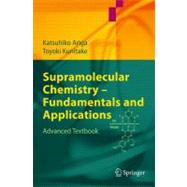
| 1 Overview - What is Supramolecular Chemistry? | 1 | (6) | |||
|
6 | (1) | |||
| 2 The Chemistry of Molecular Recognition - Host Molecules and Guest Molecules | 7 | (38) | |||
|
9 | (1) | |||
|
10 | (2) | |||
|
12 | (2) | |||
|
14 | (3) | |||
|
17 | (1) | |||
|
18 | (3) | |||
|
21 | (3) | |||
|
24 | (4) | |||
|
28 | (2) | |||
|
30 | (2) | |||
|
32 | (2) | |||
|
34 | (4) | |||
|
38 | (7) | |||
| 3 Controlling Supramolecular Topology - The Art of Building Supermolecules | 45 | (30) | |||
|
46 | (3) | |||
|
49 | (3) | |||
|
52 | (7) | |||
|
59 | (4) | |||
|
63 | (7) | |||
|
70 | (5) | |||
| 4 Molecular Self-Assembly - How to Build the Large Supermolecules | 75 | (62) | |||
|
77 | (6) | |||
|
83 | (4) | |||
|
87 | (1) | |||
|
88 | (1) | |||
|
89 | (1) | |||
|
90 | (3) | |||
|
93 | (8) | |||
|
101 | (5) | |||
|
106 | (4) | |||
|
110 | (3) | |||
|
113 | (4) | |||
|
117 | (2) | |||
|
119 | (6) | |||
|
125 | (12) | |||
| 5 Applications of Supermolecules - Molecular Devices and Nanotechnology | 137 | (38) | |||
|
138 | (2) | |||
|
140 | (4) | |||
|
144 | (5) | |||
|
149 | (1) | |||
|
150 | (5) | |||
|
155 | (6) | |||
|
161 | (5) | |||
|
166 | (1) | |||
|
167 | (8) | |||
| 6 Biological Supermolecules - Learning from Nature | 175 | (30) | |||
|
177 | (2) | |||
|
179 | (2) | |||
|
181 | (2) | |||
|
183 | (2) | |||
|
185 | (3) | |||
|
188 | (3) | |||
|
191 | (2) | |||
|
193 | (1) | |||
|
194 | (2) | |||
|
196 | (9) | |||
| Subject Index | 205 |
The New copy of this book will include any supplemental materials advertised. Please check the title of the book to determine if it should include any access cards, study guides, lab manuals, CDs, etc.
The Used, Rental and eBook copies of this book are not guaranteed to include any supplemental materials. Typically, only the book itself is included. This is true even if the title states it includes any access cards, study guides, lab manuals, CDs, etc.